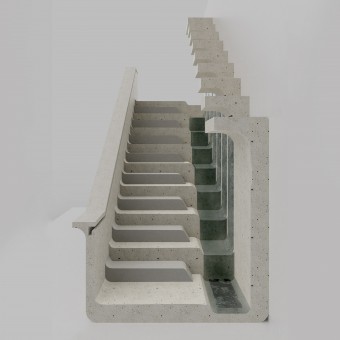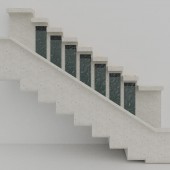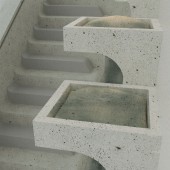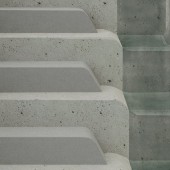
| THE AWARD |
| CATEGORIES |
| REGISTRATION |
| SUBMIT YOUR WORK |
| ENTRY INSTRUCTIONS |
| TERMS & CONDITIONS |
| PUBLICATIONS |
| DATES & FEES |
| METHODOLOGY |
| CONTACT |
| WINNERS |
| PRESS ROOM |
| GET INVOLVED |
| DESIGN PRIZE |
| DESIGN STORE |
| THE AWARD | JURY | CATEGORIES | REGISTRATION | PRESS | WINNERS | PUBLICATIONS | ENTRY INSTRUCTIONS |
Karst Water Filtration Staircase by Chi-Hao Chiang |
Home > Winners > Design #127386 >Interview |
 |
|
FS: What is the main principle, idea and inspiration behind your design?
CC: We were trying to find a balance and communal community between nature, people, and the environment. The solutional caves then became the inspiration as water plays a key character connecting all the other elements in this environment.
FS: What has been your main focus in designing this work? Especially what did you want to achieve?
CC: The main focus is to find a way to connect the interaction between behaviors of humans and water. The natural movement of humans and water can form a contrast in this piece.
FS: What are your future plans for this award winning design?
CC: We would like to keep making this design more practical and feasible, then seek any collaboration to make the design come true and help the environment.
FS: How long did it take you to design this particular concept?
CC: It's a semester-long project, about 12 to 14 weeks.
FS: Why did you design this particular concept? Was this design commissioned or did you decide to pursuit an inspiration?
CC: We started from finding inspiration from various combinations of natural materials. In the end, we decided to combine filtering and flowing together for this project.
FS: Is your design being produced or used by another company, or do you plan to sell or lease the production rights or do you intent to produce your work yourself?
CC: No, not yet, but we are happy to discuss collaboration to make this design come true.
FS: What made you design this particular type of work?
CC: It began from designing a kind of staircase for any kind of community, then we thought a community of humans and nature can be possible and interesting.
FS: Where there any other designs and/or designers that helped the influence the design of your work?
CC: They would be the professors of this studio course, Swati Piparsania and Ariane Harrison.
FS: Who is the target customer for his design?
CC: It's the residents or visitors on Governor's Island.
FS: What sets this design apart from other similar or resembling concepts?
CC: It uses the local material to be the filter which is crushed oyster shells. This is more sustainable and linked to the local culture and environment.
FS: How did you come up with the name for this design? What does it mean?
CC: The design was inspired by Karst terrain, which is famous for solutional caves, with its cave form and the process that acid rain can act with the crushed oyster shell.
FS: Which design tools did you use when you were working on this project?
CC: They are Rhino 3D, Fusion 360, Keyshot, and 3D printers to help finish this project from scratch.
FS: What is the most unique aspect of your design?
CC: I think this is how we connected the local material to the environment and also made it sustainable, in the end having an educational project.
FS: Who did you collaborate with for this design? Did you work with people with technical / specialized skills?
CC: It was my teammate Zhixian Song from Pratt Architecture Department. We worked together by combining perspectives of industrial design and architecture.
FS: What is the role of technology in this particular design?
CC: I think we all took a part of the responsibility to complete the technology.
FS: Is your design influenced by data or analytical research in any way? What kind of research did you conduct for making this design?
CC: We did research about the history of Governor's Island to find inspiration and connections between communities and the environment.
FS: What are some of the challenges you faced during the design/realization of your concept?
CC: The challenge was to find an elegant way to combine the concepts of flowing and filtering, but also to have space for humans to interact.
FS: How did you decide to submit your design to an international design competition?
CC: I thought this design is good in appearance, meaningful for the environment, and educational in its function.
FS: What did you learn or how did you improve yourself during the designing of this work?
CC: I think is how to work with other expertise and find a good balance to combine different knowledge seamlessly and smoothly.
FS: Any other things you would like to cover that have not been covered in these questions?
CC: No, thank you so much.
FS: Thank you for providing us with this opportunity to interview you.
A' Design Award and Competitions grants rights to press members and bloggers to use parts of this interview. This interview is provided as it is; DesignPRWire and A' Design Award and Competitions cannot be held responsible for the answers given by participating designers.
| SOCIAL |
| + Add to Likes / Favorites | Send to My Email | Comment | View Press-Release | Translations |




